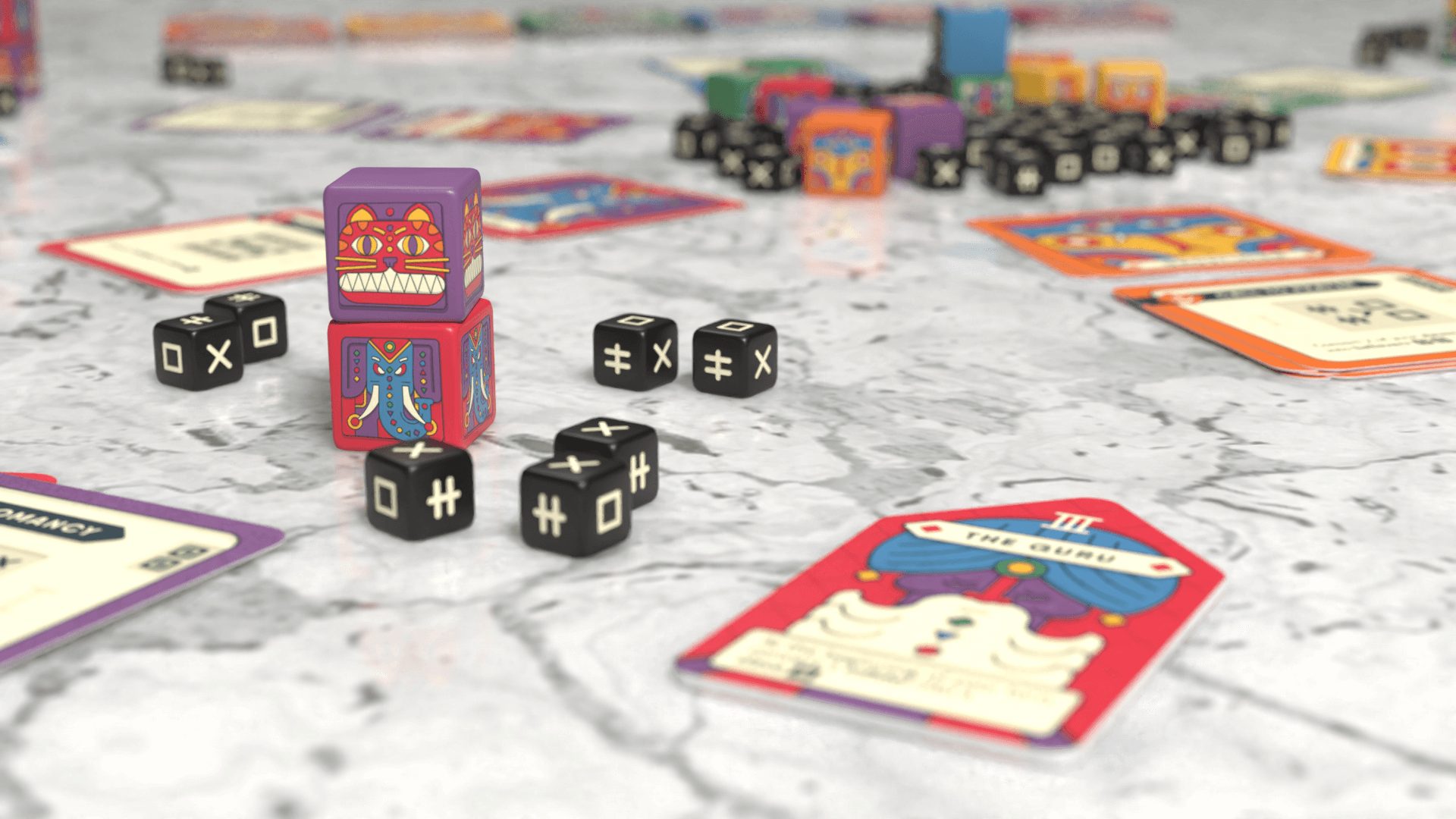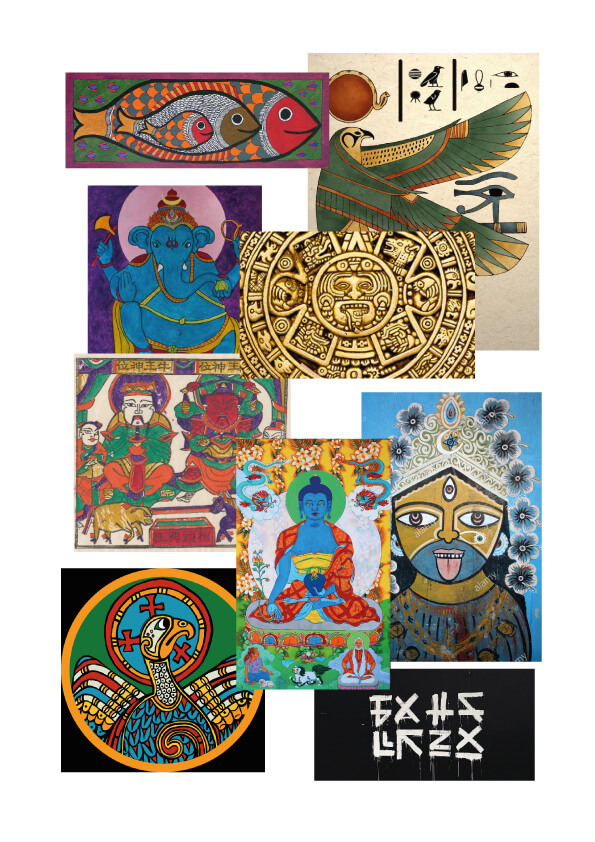
Genesis


Maarten De Schrijver is the creator of the board game Totems + Taboos, and he would like to tell you about the origins of the game.
- mechanics
- theme
- artwork
- name
1. Mechanics
The idea for T+T actually sprouted from my frustration with certain trading card games I played when I was younger (Pokémon, Magic The Gathering, …). They’re great games and I had a blast with them, but my experience was always the same: buying a starter deck (under mild pressure from my friends) with a theme that appealed to me. My friends bought more and more cards, and perfected their decks while I played with my slightly modified starter deck (because of a limited budget) and started losing more and more games.
Often, my frustration was larger than the fun I had with these kinds of deck building games. As a result, I completely stopped playing the game. Until a few years later someone dragged me back in, I bought another starter deck and it was the same story all over again…
It’s a classic tale
Boy meets starter deck
Boy loses every game
Boy needs to buy more cards
Boy makes his own game instead


I have always loved deck construction games, combined with hand management tactics. How you compose a deck can lead to totally different playstyles and experiences. But I dislike how the more money you invest in cards, the better your deck can/will be.
So I thought: what if I created a card game, but only include the things I like about them (different decks with different themes, flavors, each with different play styles) and exclude the things I don’t like (investing a small fortune in cards). I also didn’t want players to build their decks beforehand. Instead, they’d have all the cards available right from the start, but players would have to meet certain conditions to be able to play cards.
The decks would have to be at the center of the table, easily within reach of every player. As I was cutting pieces out of paper and trying different layouts, a circle worked best. I created a color wheel of 3 primary and 3 secondary colors, where each would represent a theme, and the resources could be in the center of it.
2. Theme


I was happy with the layout in a circle, with 6 decks each with their own color and flavor, and thought it had an occult feel to it. Like laying out Tarot cards. So what if the resources weren’t money or some other valuables, but actual people. You had to “collect”, earn, or convince those people to be on your side and serve you. Some running sessions/pub visits/sleepless nights later I had a fitting concept: a game about a fictional religion each player could construct to their own liking. The resources in the middle of the table are non-believers you have to convert. The more believers you have, the more power, so the more cards you can play. Each color represents a different aspect of that religion you can mix and match.
I didn’t want to focus on one type of religion or call any religion by their name, but keep it as broad as possible. Also knowing this is a risky theme to get people offended (which probably will happen), but that’s not the intention. So I used the setup of the color wheel also as a setup for the themes of each color. So complementary colors are also complementary themes. I placed life versus death, love versus fear and faith versus truth. Because although complementary, they also can’t exist without each other. There is no death without life, you can love fear and fear love, you can have faith in the truth or find truth in your faith. The more I thought about it, the more pieces of the puzzle were falling into place.
To make it visually clear which religion or player is winning, every religion should have something like statues or temples or places of worship for the god(s). So for a scoring system I thought, while you play, you also have to build your religious statue. The higher, the better, and when a player reaches a certain height, they win.
3. Artwork
I didn’t want the theme to focus on one single type of religion or culture, and I didn’t want the art to do that either. I researched ancient (religious) art forms from as many different cultures as possible, and it struck me that there were many resemblances: bright colors (if not desaturated by time), clean crisp lines, no perspective, lots of animals… So I wanted to include all of that in my artwork, as if a new long lost religion were discovered today.
“ it struck me that there were many resemblances: bright colors, clean crisp lines, no perspective, lots of animals… “


I combined many different facets, added some modern flavor, and presto! Since I didn’t want to portray particular gods, I chose animals to represent the different aspects/colors. I also chose the animal in function of their theme (snake for faith, fish for truth, elephant for love, bird for life..) and made sure I didn’t use animals or depictions from just one part of the world.
The religious statues had to be easy to build, so I went for stacked dice. Totem pillars are used in lots of ancient religions (Asian, Aboriginal, Native American, … even Celtic, Egyptian, you name it …). Each block in the color of its aspect of religion, with their respective animal portrayed on it.
Also for the symbols I took inspiration from a mixture of runes, hieroglyphes, cuneiform, … to create something new.
And that’s the basis for all the artwork for this game. Something new, but still recognisable. So, no matter where you are from, or what your cultural background is, you’ll recognise some aspects of it.
4. Name
And last but certainly not least: the name. I had some restrictions for myself for coming up with a name: it had to sound great, had to have words recognisable in different languages, no (obvious) cliches and had to cover the load. Not an easy task. But the theme, setup and art were there, so I had something to start with.
I once read some interesting theory about the inevitability of humans to start a religion (as opposed to other animals). Every human tribe in history, sooner of later, starts developing their spirituality in some sort of belief system. And what’s even more baffling, the basis of those systems are comparable with each other; some divine beings, people who are (claim to be) spiritual guides, buildings paying respect to those beings, rituals, … It’s almost as if it’s in our DNA to believe, either in a god or in science or anything that can give meaning to our lives. That’s the theme of the game.



Anyhow, that theory is based on a paragraph of Freud’s anthropological study of ancient tribes called “Totem und Tabu”. And although many findings of that study are now obsolete and clearly wrong, it’s still an interesting theory, and more importantly, a very catchy name.
It also fits the game very well, because a totem in the literal definition of the word is a symbol that serves as an emblem of a group of people. And “taboo”, well… You can’t make a game about religion without repulsing some people…
So, that’s the backstory of the game.
Amen,
Maarten
